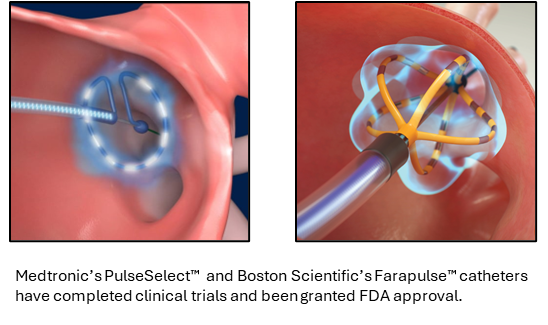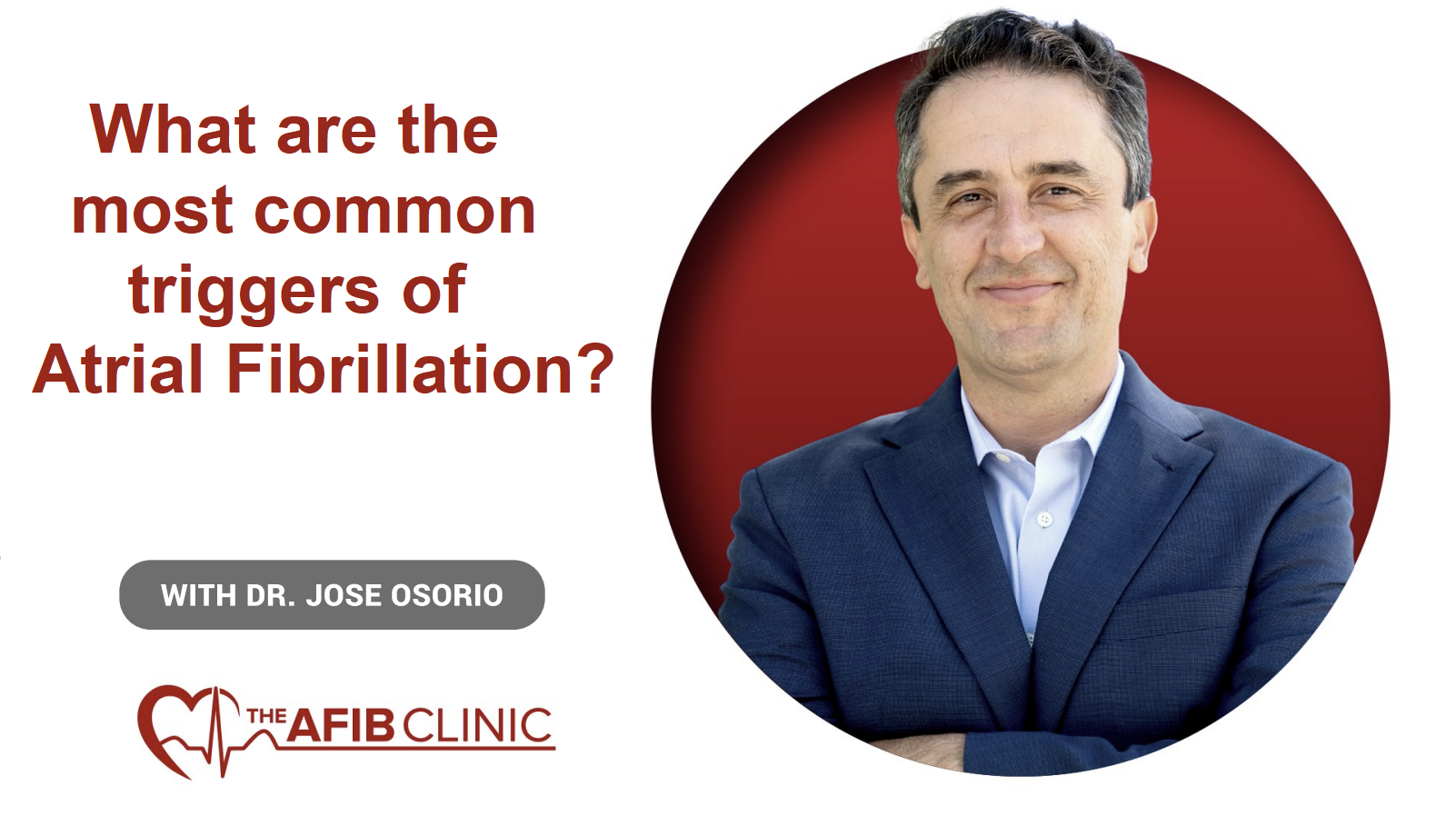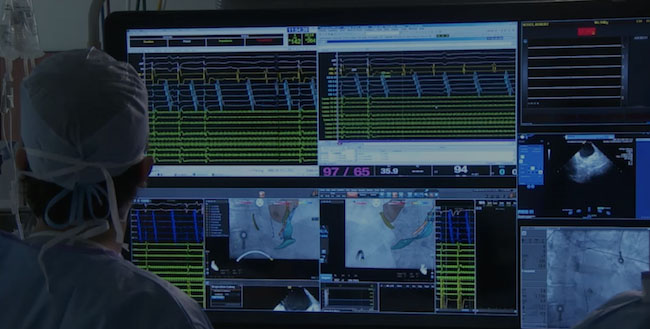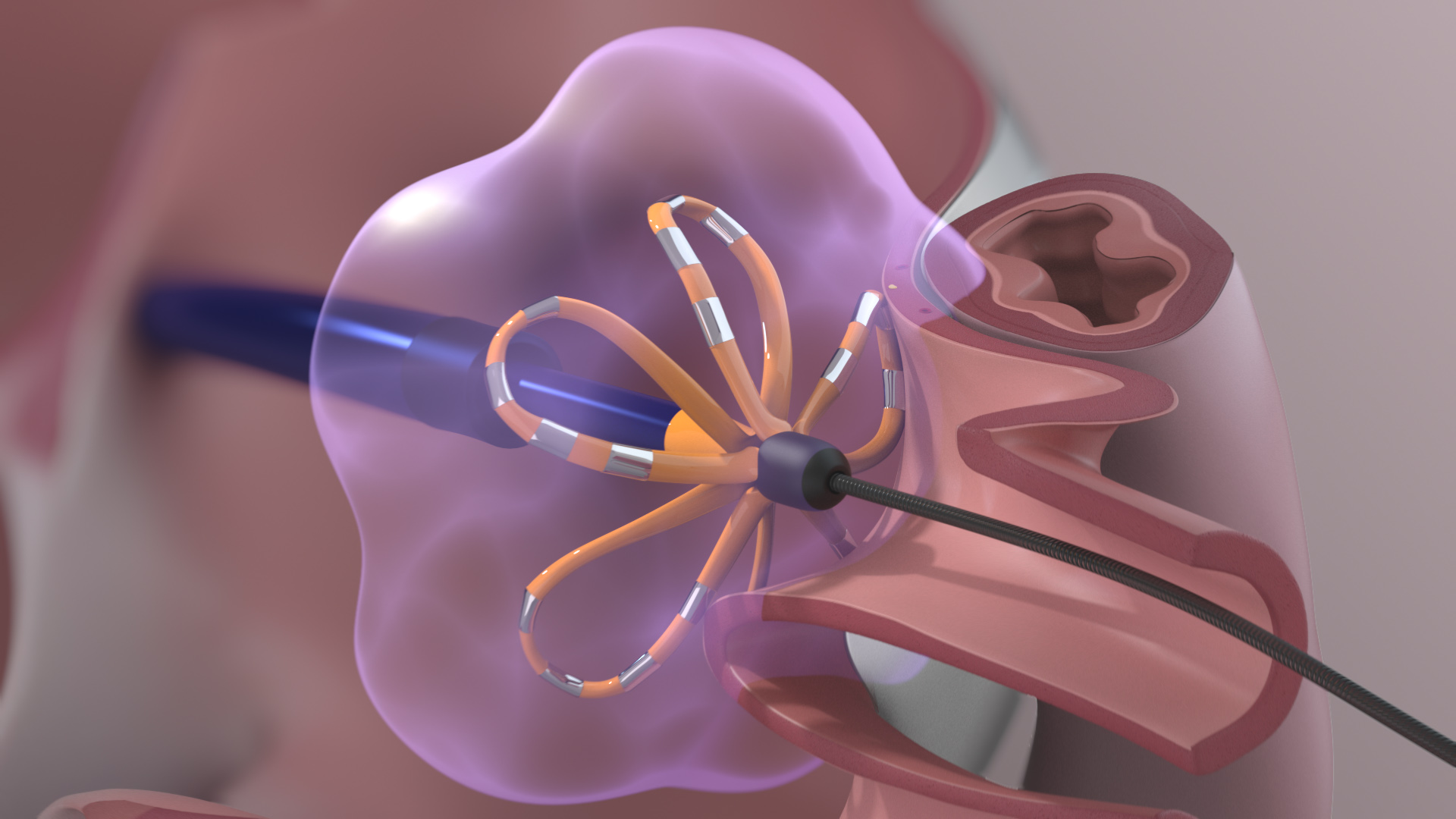Afib Ablation
According to the Heart Rhythm Society, up to 16 million Americans will have atrial fibrillation (AFib) by 2050, making it the most common type of arrhythmia. As the prevalence of AFib grows, advancements in AFib ablation are becoming critical to improving patient outcomes. The latest breakthrough in this field is Pulsed Field Ablation (PFA), a novel ablation technology that promises to transform the way we treat AFib.
What is changing in Atrial Fibrillation treatment?
Atrial fibrillation ablation has become the cornerstone of AFib treatment, targeting the pulmonary veins and other areas that trigger AFib episodes. Traditionally, AFib ablation has relied on thermal energy, either heating tissue through radiofrequency ablation or cooling it through cryoablation. These methods, while effective, carry some risks, as they involve burning or freezing tissue, which can lead to damage to nearby structures.
Now, we are entering a new era of AFib treatment with the introduction of Pulsed Field Ablation (PFA). This cutting-edge technology uses a rapid pulse of electrical energy to ablate targeted heart tissue without significantly raising tissue temperature. As a result, PFA minimizes the risk of collateral damage to nearby structures, offering patients a safer, more efficient alternative to traditional ablation techniques.
For more information on AFib ablation, visit our AFib Ablation page.
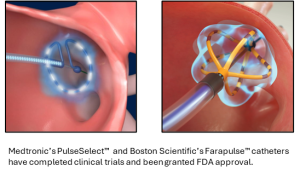
Pulsed Field Ablation is a novel, non-thermal energy modality for ablation of Atrial Fibrillation. There are devices that have recently been approved in the US.
Key Advantages of Pulsed Field Ablation (PFA)
PFA offers several key advantages over traditional ablation methods, making it a revolutionary advancement in the treatment of AFib:
- Selective to Heart Tissue: Unlike thermal ablation, PFA selectively targets heart tissue, leaving surrounding structures such as the esophagus, nerves, and blood vessels unharmed. This significantly reduces the risk of esophageal injury, a serious complication sometimes seen in traditional ablation procedures.
- Faster Procedure Times: PFA delivers energy more quickly than traditional methods, reducing overall procedure time. Shorter procedures improve patient safety, reduce anesthesia time, and allow more patients to be treated in the specialized environment of the electrophysiology (EP) lab.
- Effectiveness and Safety: Early clinical trials in Europe and the U.S. have demonstrated that PFA is at least as effective as traditional ablation techniques, with a shorter learning curve for physicians. This means PFA can standardize outcomes across different centers, potentially making the procedure more consistent and accessible to a wider range of patients.
- Real-World Application: PFA has been approved in Europe for several years, where tens of thousands of procedures have already been performed with excellent safety and efficacy outcomes. In the U.S., several clinical trials have been completed, and two PFA technologies have recently received FDA approval.
Why Pulsed Field Ablation (PFA) Is a Game Changer for AFib Ablation
In my opinion, PFA represents a significant leap forward in the treatment of AFib. Here’s why:
- Safety: PFA has shown to be safer than traditional ablation methods, particularly in eliminating the risk of esophageal injury.
- Efficiency: PFA is faster, which not only reduces the time a patient spends in the EP lab but also improves safety by minimizing the need for prolonged anesthesia.
- Effectiveness: Early data suggest that PFA is as effective, if not more effective, than traditional ablation technologies, particularly in its ability to deliver consistent results across multiple centers and physicians.
- Shorter Learning Curve: Physicians have found PFA easier to adopt, with a faster learning curve and quicker mastery of the technique, which means more patients can benefit from the technology sooner.
Although, at face value, one may think that the results of these studies are not spectacular, I think we should all consider carefully how impressive this technology really could be. Catheter ablation has been around for several decades, and the physicians who participated in the PFA trials are some of the most experienced in the world. PFA was a new technology, and doctors were immediately able to deliver ablation that was at least as effective but faster and safer in many ways. Further real-world studies have shown very short learning curves, or the number of procedures it takes a physician to achieve optimal results with a new tool or technique, and even shorter procedure times. Therefore, even though a brand-new technology was being tested, the results were quite good, and some clear advantages were identified.
The Future of AFib Ablation with PFA
While PFA is a relatively new technology, the early results from clinical trials and real-world applications are promising. Physicians participating in the PFA trials were able to deliver ablations that were not only faster but also safer than traditional methods. The ability to reduce procedure time while improving outcomes is an exciting development for the future of AFib care.
As more clinical data becomes available and more physicians adopt PFA, I believe this technology will become the gold standard in AFib ablation. At The AFib Clinic, we are proud to be at the forefront of this new technology, offering patients the latest and most advanced treatments for atrial fibrillation.
For more information on Pulsed Field Ablation (PFA) and how it can benefit you, contact Dr. José Osorio at The AFib Clinic in Miami, FL.
In summary, PFA will change the landscape of AFib ablation. The technology will advance fast, ushering in a new era in AFib care. I hope that real-world results with the recently and soon-to-be-approved technologies in the US will mirror what was seen in Europe and that we will quickly learn how to improve them by leveraging data collection and collaboration!
Dr Jose Osorio
Miami, FL
Read more about AFib:
AFib Ablation: Advanced Atrial Fibrillation Treatment in Miami | The AFib Clinic

